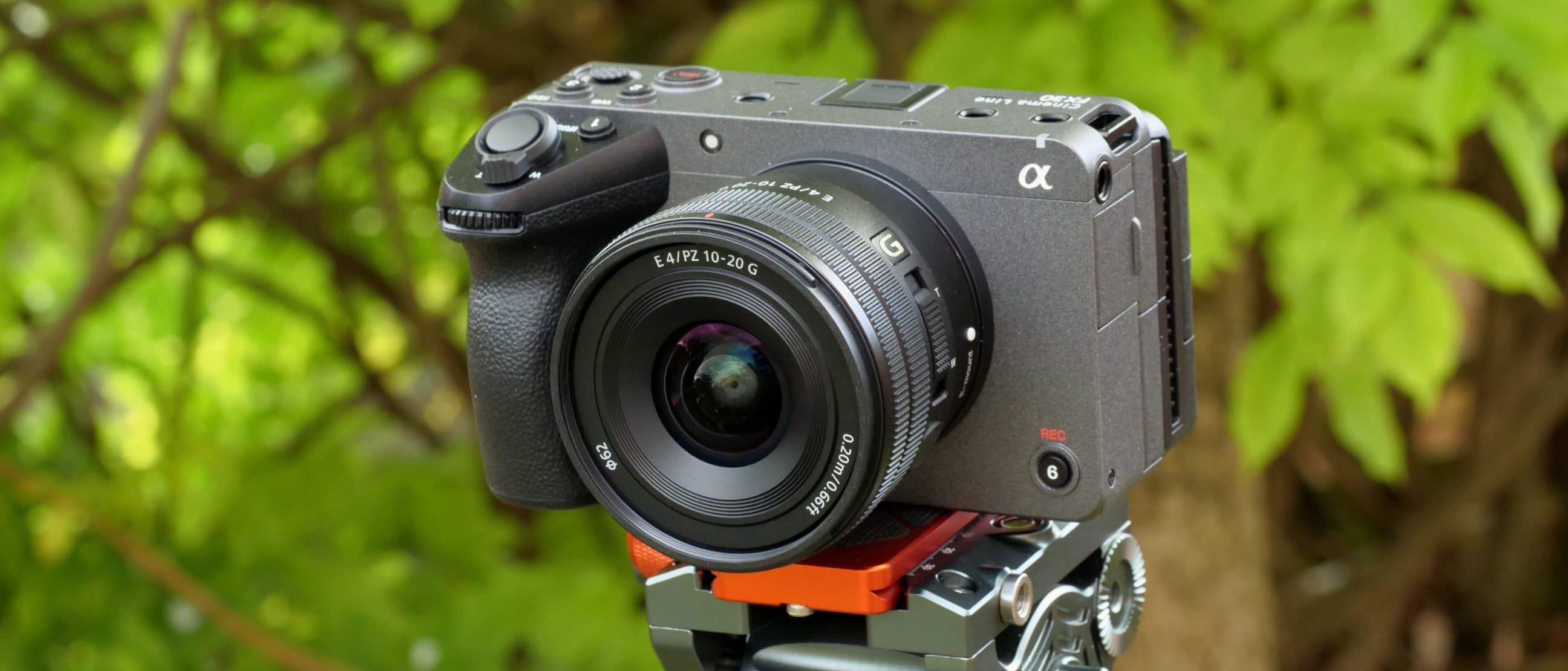Digital Camera World Verdict
It’s always risky giving a camera a 5-star rating based on a fairly limited acquaintance, but unless something dreadful crawls out of the woodwork that we don’t know about yet, the FX30 deserves it. This is a full-on cinema camera at a mirrorless camera price point, and perfectly positioned to help ambitious creators develop their professional skills. The FX30 is a video-first camera but can still take 26MP stills, and it doesn’t just blow Sony’s ageing A6000 series out of the water, it makes the FX3 look a bit limited too. Bravo!
Pros
- +
Cinema camera features and design
- +
Cinema Line LUTs and log modes
- +
Premium build quality
- +
4K 120p (albeit with a crop)
- +
The price!
Cons
- -
No EVF
- -
3-inch rear screen feels small
- -
IBIS not very effective
Why you can trust Digital Camera World
Sony is steadily extending its Cinema Line downwards. At the top of the range is the Venice 2 camera, then there's the FX9, FX6 and the FX3… and now the most affordable option yet, the FX30.
It's an immediate candidate as one of the best filmmaking cameras, and perhaps best cinema cameras, for B-roll footage at least. It's also worth considering as one of the best cameras for vlogging, especially for users keen to move up to more professional, cinematic productions.
Sony wanted to produce a camera that would work for relatively simple straight-from-camera video creators but would also let them extend their shooting and post-production capabilities as they move up to cinema style production values.
It’s achieved that with the cheapest cinema camera yet (excluding the rather different Blackmagic Pocket Cinema 4K and 6K cameras), but one that includes Sony’s cutting edge stabilization and AF technologies, not to mention ‘unlimited’ recording times and 4K capture up to 120p.
And where the Sony FX3, the next model up in the range, is essentially a reskinned A7S III for cinema users, the FX30’s internal tech is all new. It doesn’t use the ageing 24MP sensor so far used throughout the A6000 series, but a brand new 26MP (20MP for video) back-illuminated CMOS sensor matched with a fast BIONZ XR processor.
This is no A6000-series reskin (like the ZV-E10). This is a new camera.
Specifications
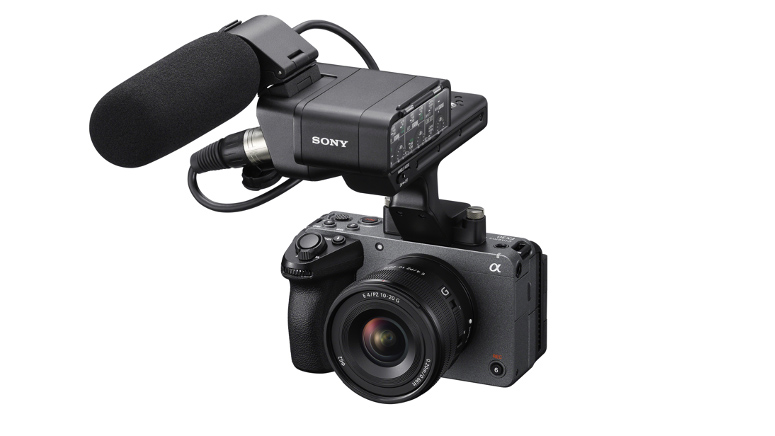
Sony model number: ILME-FX30
Sensor: 20.1MP (26MP stills) back-illuminated APS-C Exmor R CMOS
Image processor: BIONZ XR
Mount: Sony E
ISO range: 100-32,000, dual base ISO 800/2,500 in S-Log3
Shutter speeds: TBC
Image stabilization: 5-axis IBIS, DIS with gyro data
Max image size: 6192 × 4128 pixels
Max video resolution: 4K 120p
Viewfinder: No
Memory card: 2x SD UHS-II/CFexpress Type A
LCD: Vari-angle touchscreen
Size: 129.7 x 77.8 x 84.5mm
Weight: 646g body only
Key features
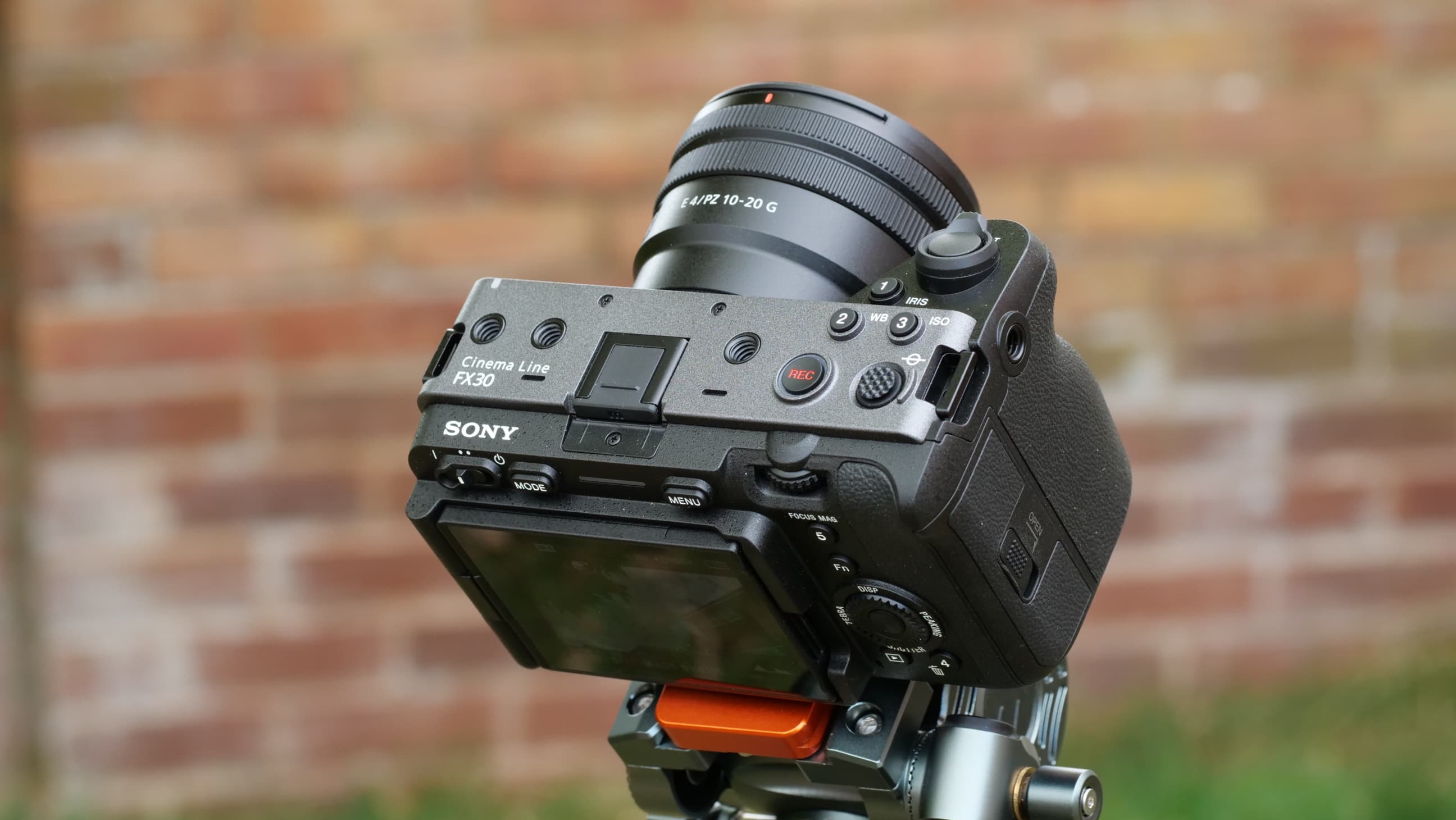
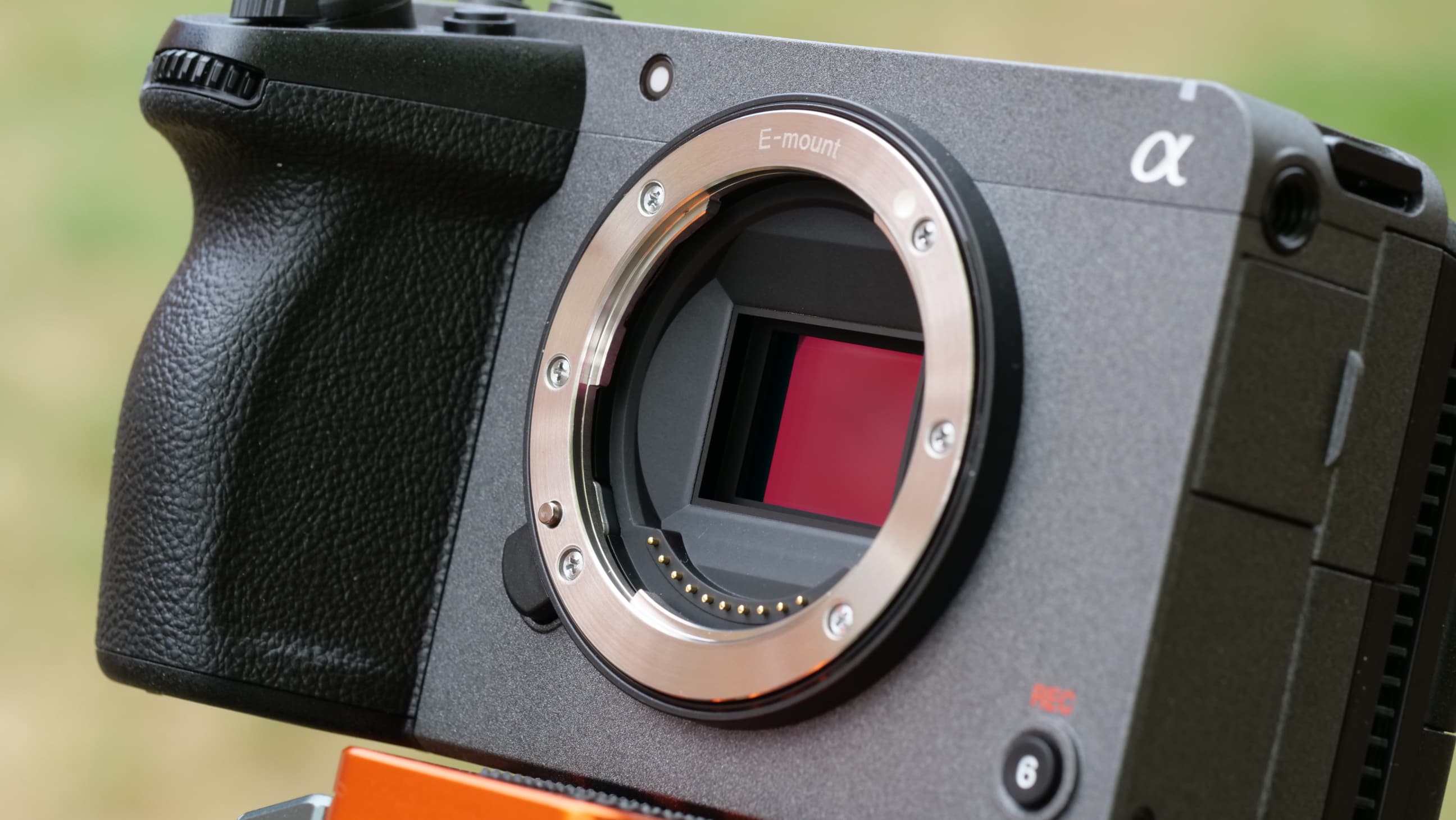
Let’s start with the design. The FX30 has the same chunky grip and grey-black finish of Sony’s other cinema line cameras, which immediately sets it apart from Sony’s previous APS-C models. There’s no EVF (and neither would we expect one on a cinema camera), but there is a vari-angle screen on the back.
There are also five accessory mounting points on the camera body itself, so you won’t need a cage to rig this camera up, and while you can buy the FX30 body-only, it will also be sold with an combined carry handle and XLR mic adaptor – and this has a further three mounting points.
Inside the camera is a new sensor with a resolution that Sony quotes as 20.1MP, presumably reflecting the 16:9 video aspect ratio, but it also shoots 26MP stills in the taller 3:2 native ratio for APS-C sensors (or Super35 if we’re going to talk video).
This offers dual base ISO 800/2,500 in S-Log3 shooting mode, where Sony also claims 14+ stops of dynamic range, and in regular use you get an ISO range of 100-32,000.
The headline video features include the FX30’s 4K 120p capability, though with a hefty 1.6x crop. 4K 60p also comes with a crop, though it’s so small at 1.04x that you probably won’t notice.
Otherwise, Sony does its usual thing of capturing oversampled data without pixel binning for the highest image quality, in this case oversampling the sensor’s native 6K capture down to 4K.
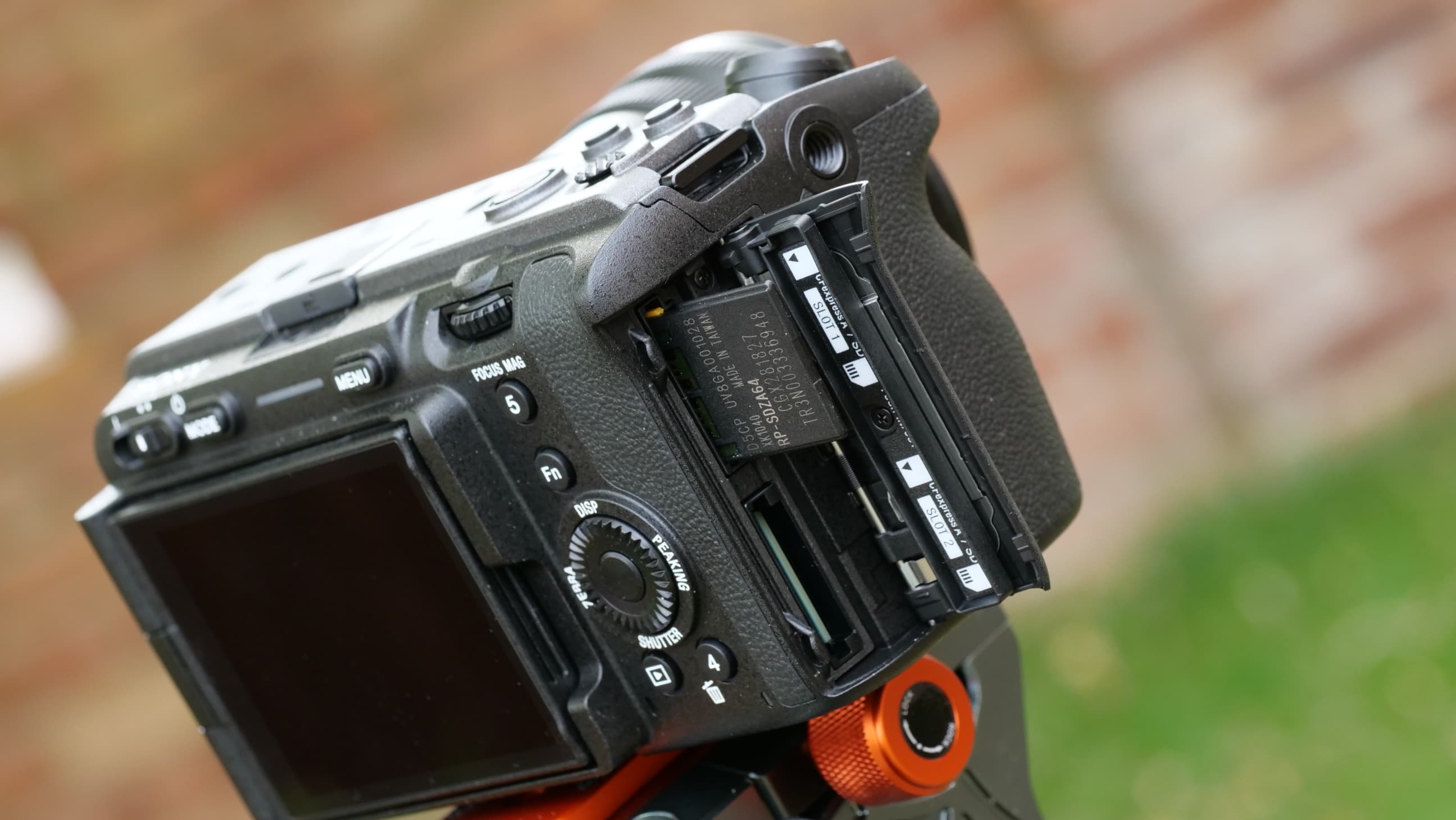
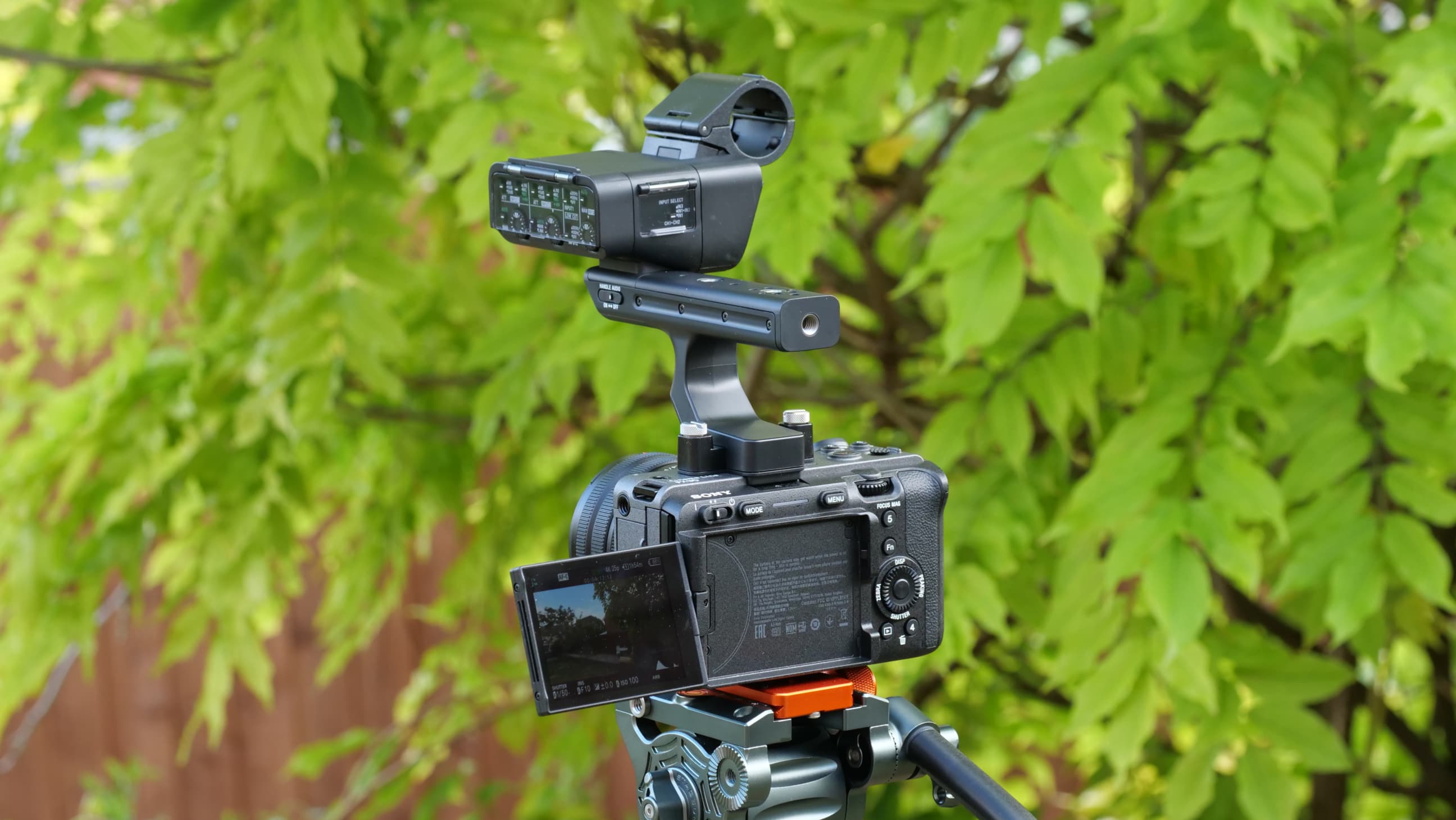
Capture formats include:
• XAVC HS 4K H.265 up to 120p 10-bit 4:2:2 Long GOP
• XAVC S 4K H.264 up to 120p 10-bit 4:2:2 Long GOP
• XAVC S-I 4K H.264 up to 60p 10-bit 4:2:2 All-Intra
You will need faster the CFexpress Type A card format for some modes, but not that many:
• XAVC S-I 4K S&Q 120/60fps
• XAVC S-I HD 240fps
• All XAVC S-I proxy recording
Another major push with the FX30 is towards ‘cinematic expression’, with Sony’s S-Cinetone profile, user-defined LUTs and a choice of Flexible ISO mode and Cine EI and Cine EI Quick modes from further up Sony’s Cinema Line.
Unlike the cheaper vlogger-focused Sony ZV-E10, the FX30 does have in-body stabilization. It also has digital image stabilization with embedded gyro data which can be extracted and applied in Sony’s free Catalyst Browse software – and that proved very effective indeed when we tested gyro stabilization with the Sony ZV-E10.
The AF system has all the Real-Time Eye AF (human, animal, bird) and Real-time Tracking tech we now take for granted from Sony, and uses 495 AF points covering 97% of the frame height and 93% of the width. One interesting new feature is a ‘Focus Map’ to help visualize depth of field, and the FX30 also supports Sony’s relatively new Breathing Compensation (selected lenses only).
Build and handling
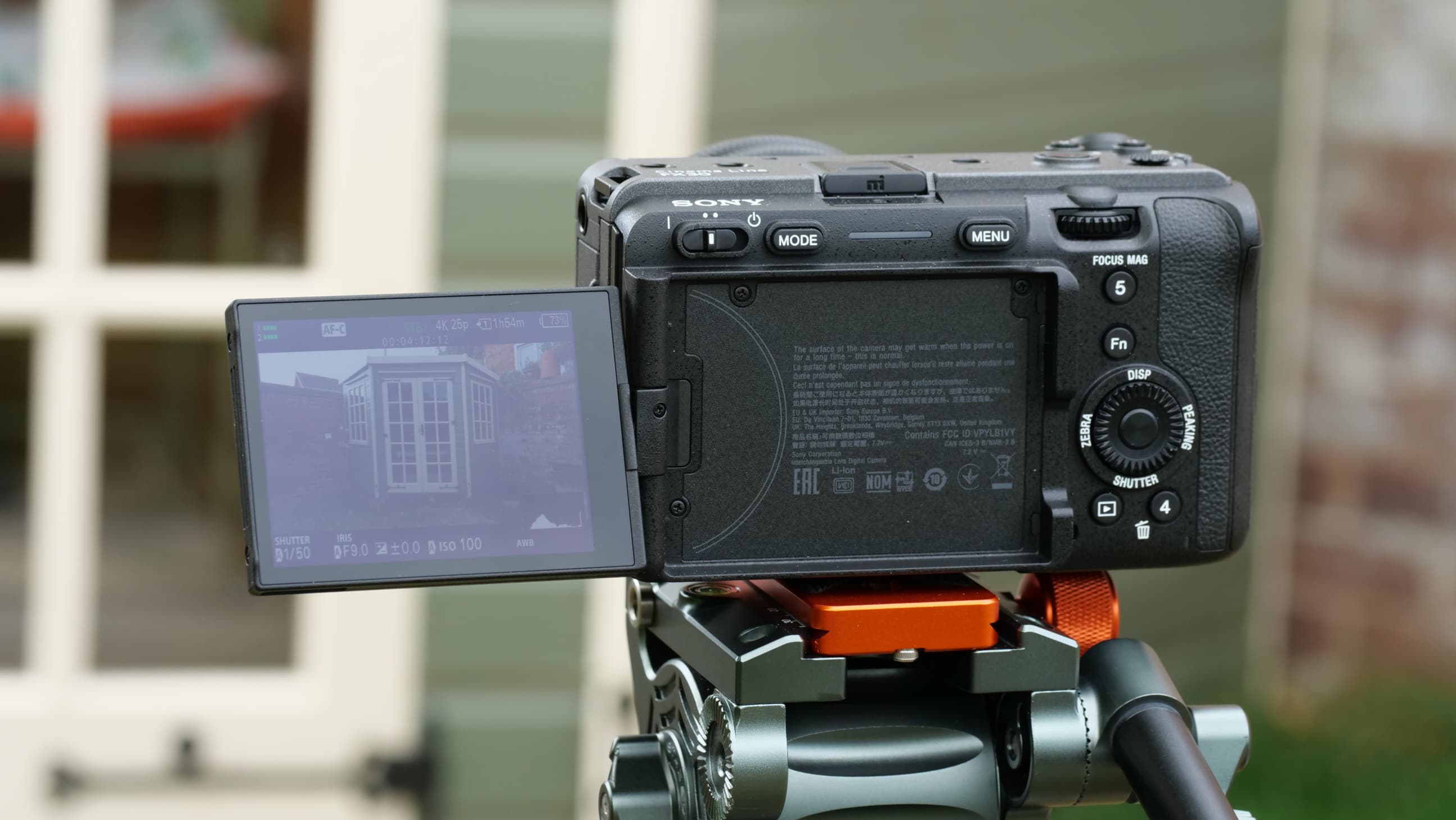
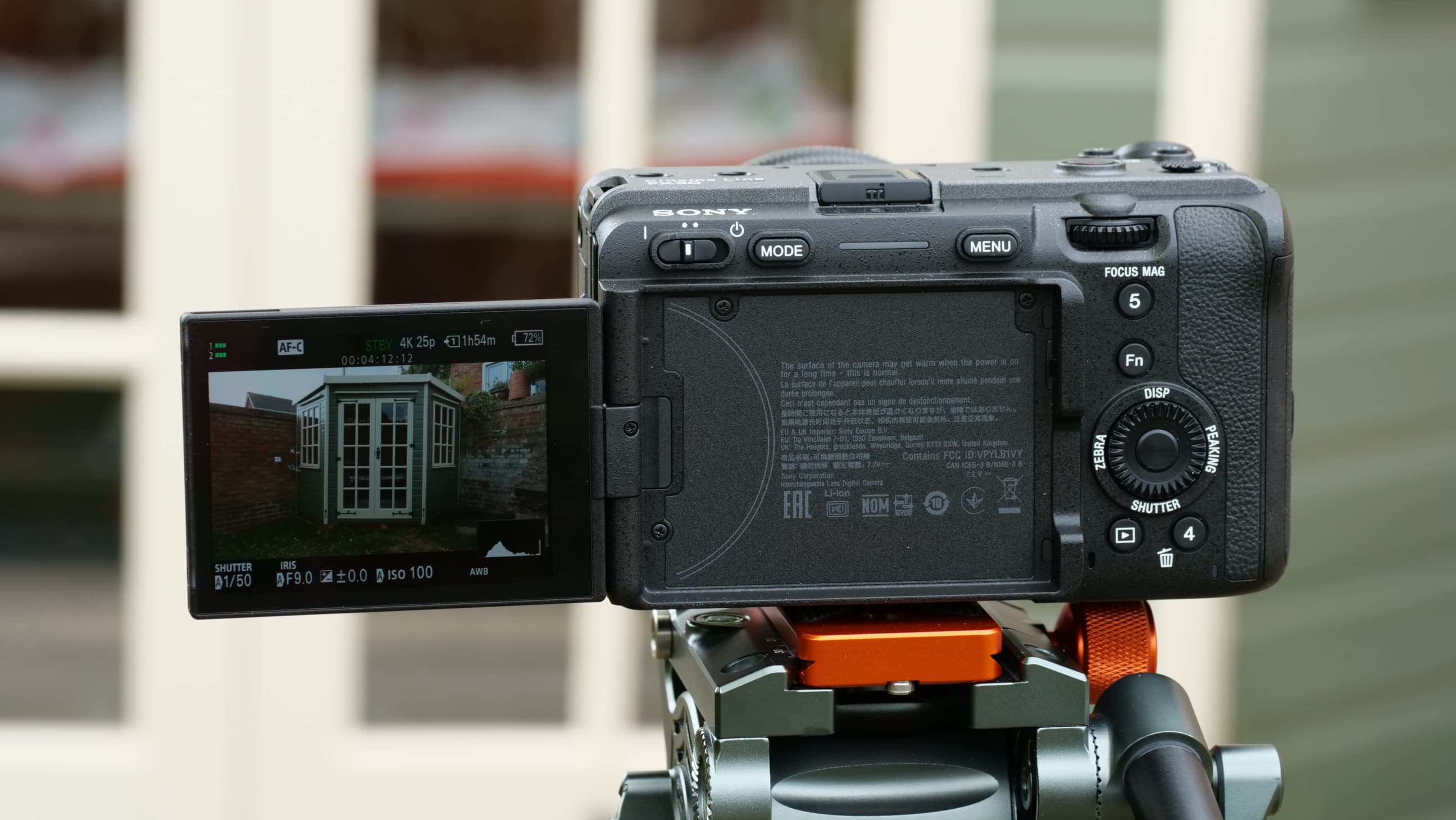
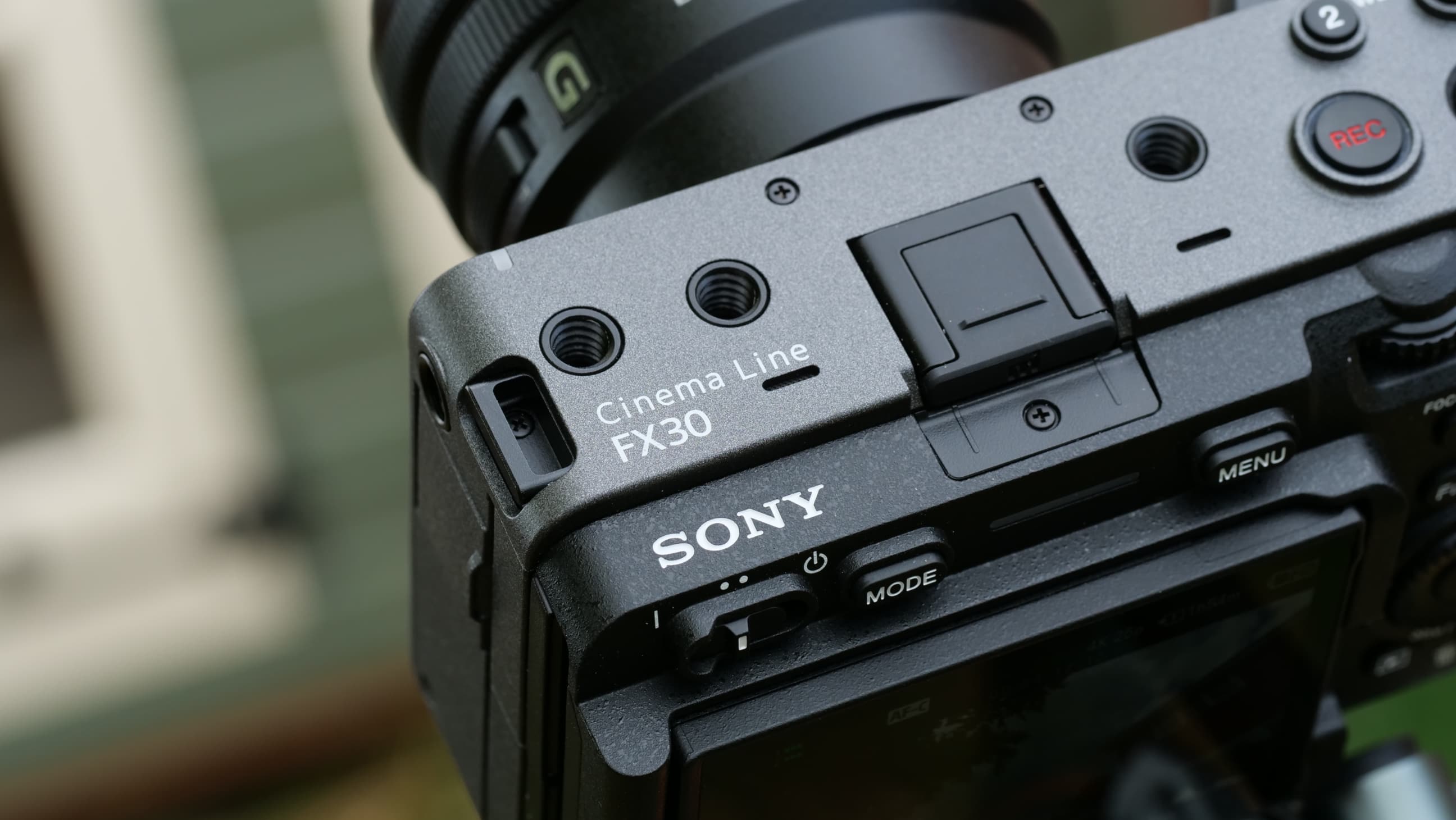
Sony’s previous APS-C mirrorless cameras have been almost too petite, especially with a pro lens on the front, but the FX30 is much more substantial. It’s a lot thicker in the body, which is due no doubt to the IBIS unit but also the cooling vents behind the rear screen. It’s still not a big camera, but it’s a lot more substantial to hold and use, and all the better for that.
The rear screen’s vari-angle pivot is welcome, but the screen itself is a bit disappointing. Sony is sticking with a 3-inch display, even on this more serious cine camera, and it’s not only a bit on the small side, it’s also quite prone to glare in strong outdoor lighting. Adjusting the screen angle will help, but it’s not ideal.
The controls are generally very good. The rear control pad has buttons for shutter control, zebra and peaking display and for cycling through the display modes. It suits this camera’s video-orientated design.
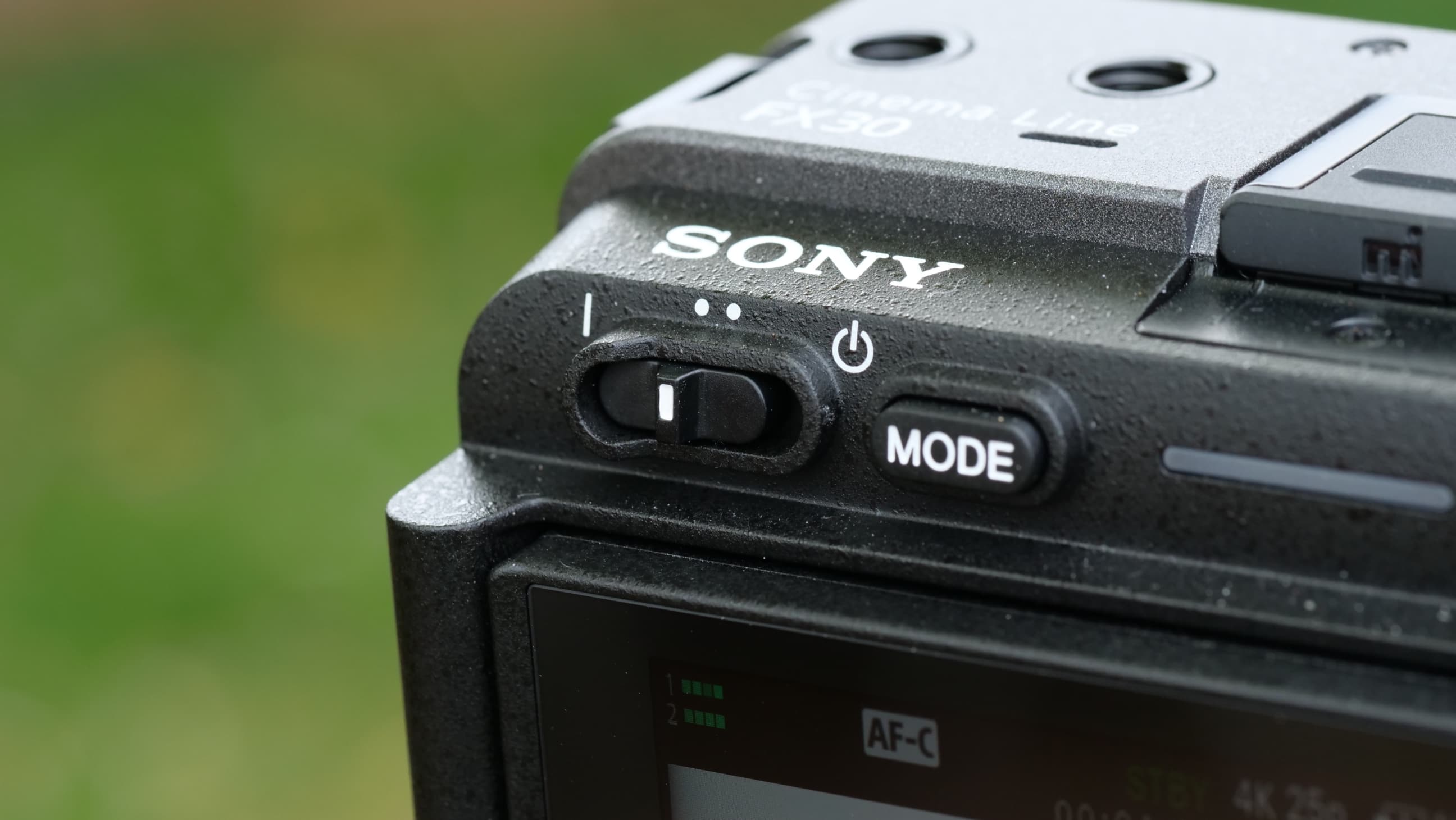
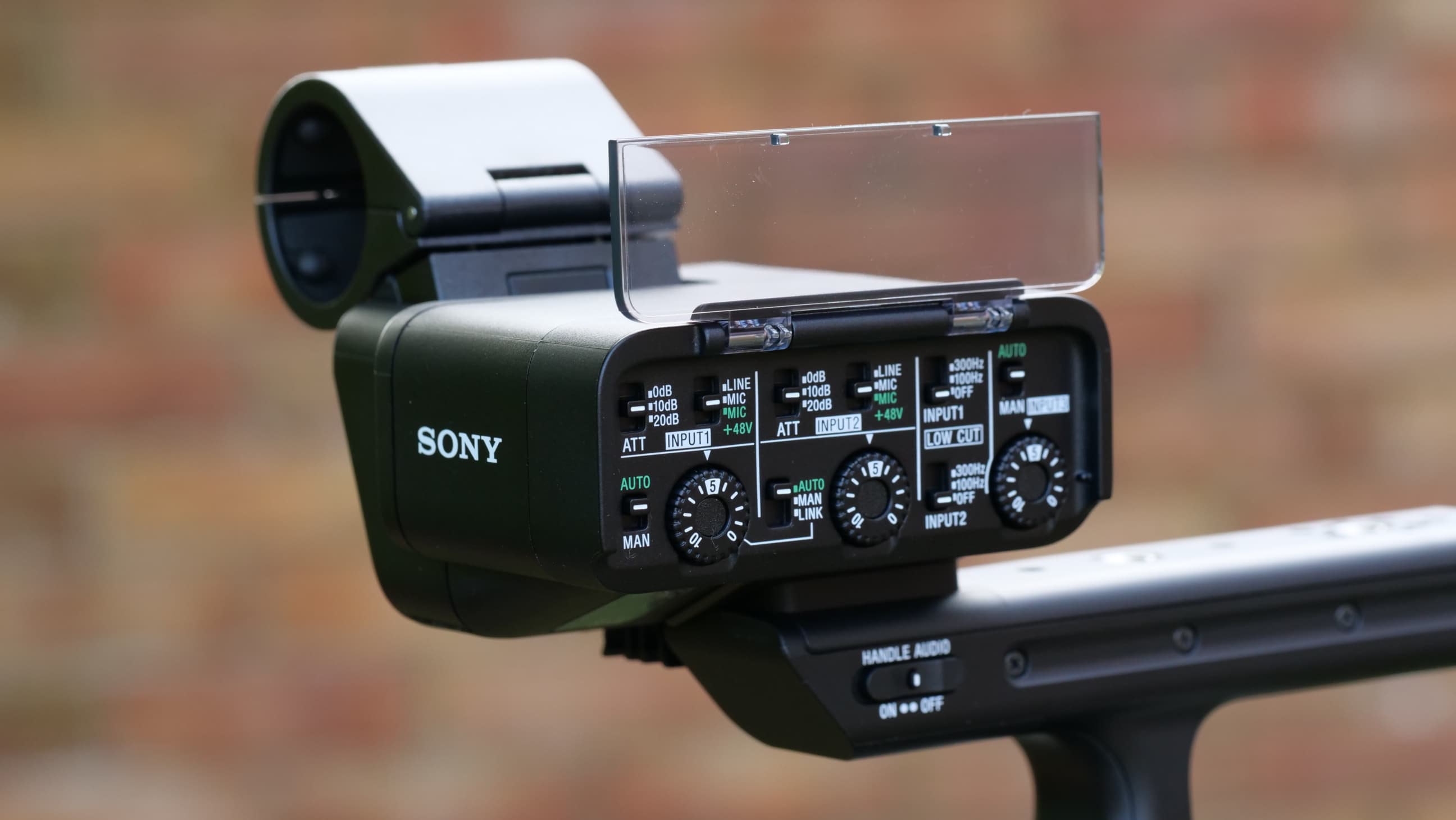
The power button is odd, though. You switch on by pushing it to the left instead of to the right, which seems to go against all normal convention (or is it just me?) and having a mode button to cycle through the camera modes seems a little too indirect – a physical mode dial would be quicker and would also show you the camera modes without having to switch it on or check the display.
This is also a camera built for infinite customization. The custom buttons are labelled with their default functions – 1, 2 and 3 are labelled Iris, WB and ISO, for example, but the expectation, clearly, is that users will program this camera to suit their own way of working.
The Record button is on the top of the camera (I found it easier to reach with my thumb than my forefinger) but there’s a second record button (function button 6) on the front of the camera next to the lens which you might find equally convenient.
Performance
Here's a video we put together to try out the FX30's stabilization, 4K 120 video (100p in our test) and S&Q timelapses.
We tested the FX30 with the relatively new Sony E 10-20mm PZ lens, and also our own Zeiss 16-35mm f/4 for a longer focal range. We shot both stills images and video, and while we didn’t try anything fancy with log modes and LUTs in the time we had available, we did use the S&Q modes.
By now, there’s not much to say about Sony’s AF system, widely regarded as the best around. All you have to do is work out the AF mode and settings you need for your style of shooting and subject matter.
The stabilization is less clear cut. Having in-body stabilization is better than not having it, to be sure, but while it’s great for stills photography and shooting handheld from a static position, it’s a lot less effective for anything but the slowest pans, and doesn’t cope well with walking and filming.
But with digital stabilization and the help of Sony’s Catalyst Browse software, the story changes. This software can use the gyro metadata embedded in the video to counteract camera movement automatically, and can deliver almost uncanny smoothness from the shakiest looking video.
That’s great – but the problem is that you need Sony’s software to do it, which somewhat complicates your workflow, and there’s a significant crop factor that goes with it.
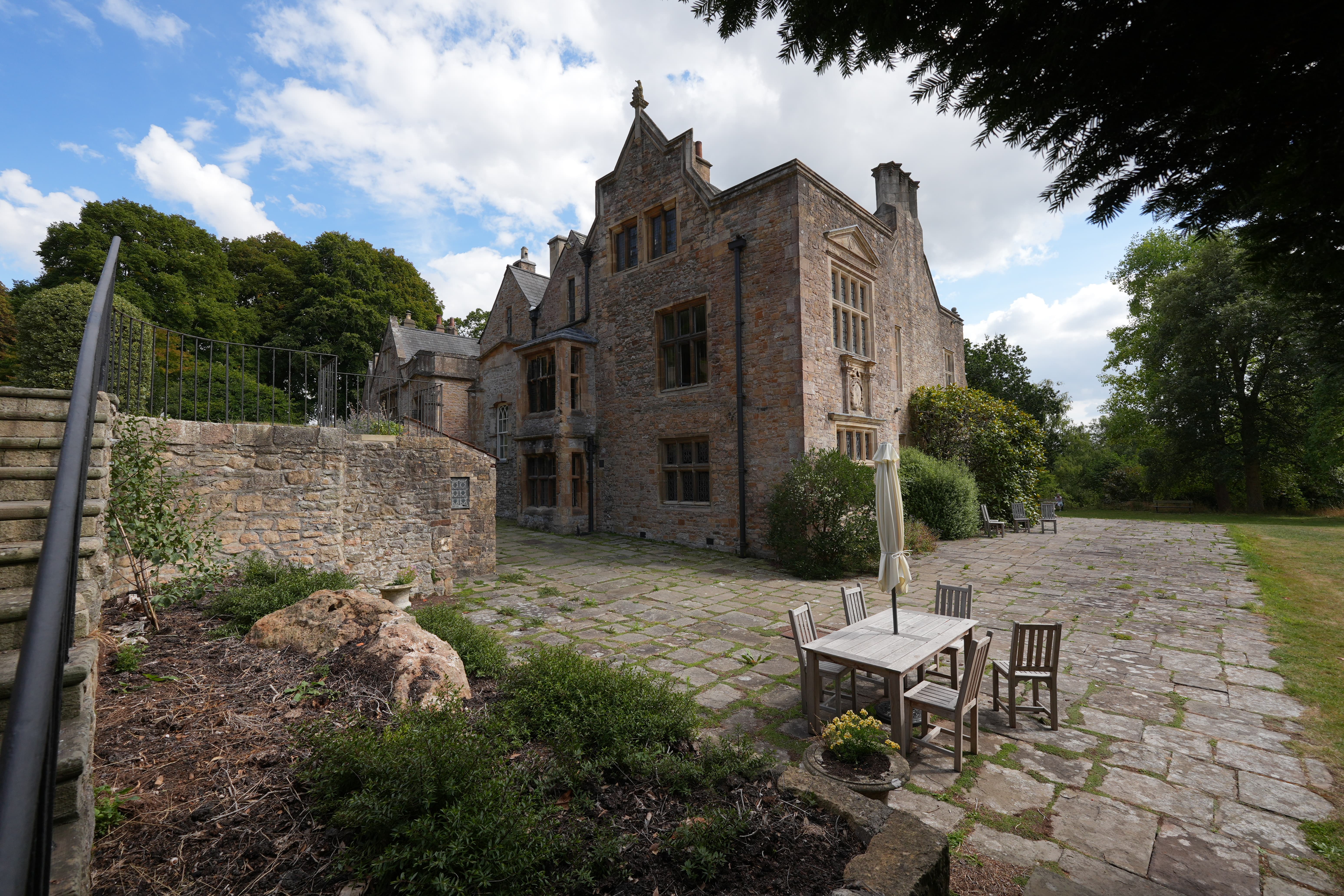
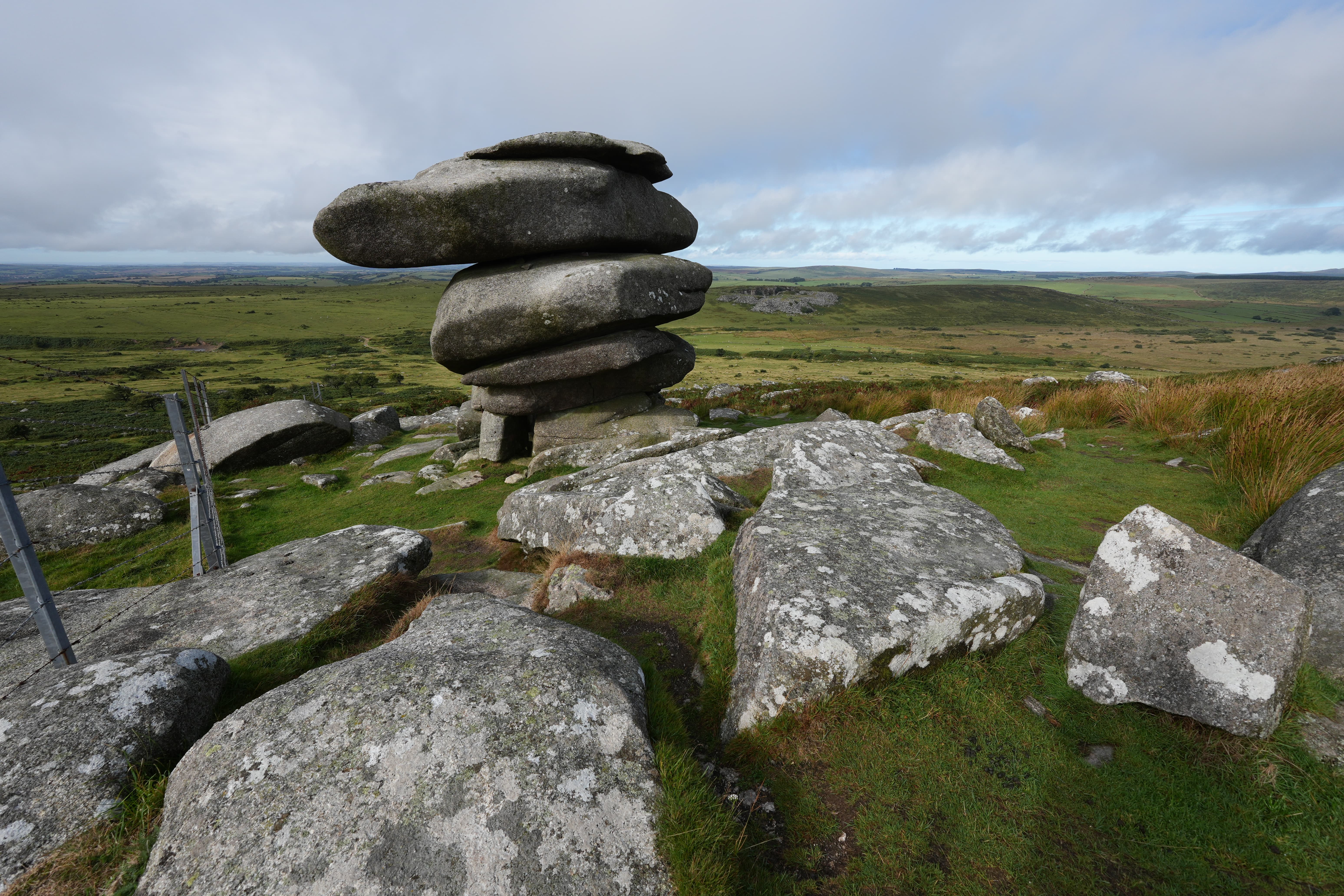
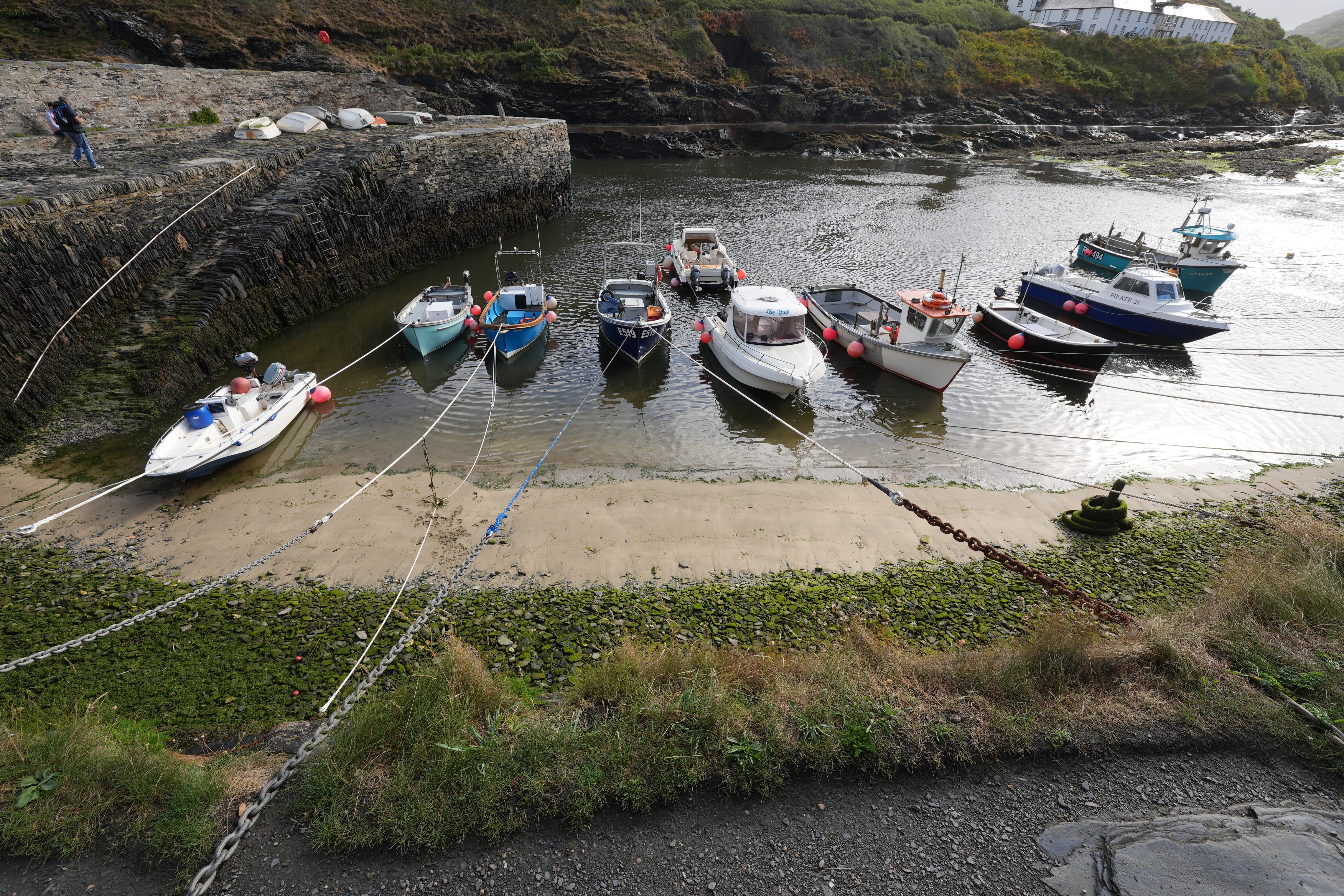
That aside, the FX30’s results look great, both for stills photography and video. The only issue we had was a silly one – our first 4K 120 S&Q test looked soft, but that’s because it’s way too easy too slide the AF/MF switch on the 10-20mm PZ lens when you’re mounting or unmounting it. It wasn’t soft, it was just not focusing – user error, this time.
We’d need to spend a lot longer with this camera to get a full sense of its video capabilities, and we expect these to be examined in depth by lots of pro videographers over the next few weeks and months.
Verdict
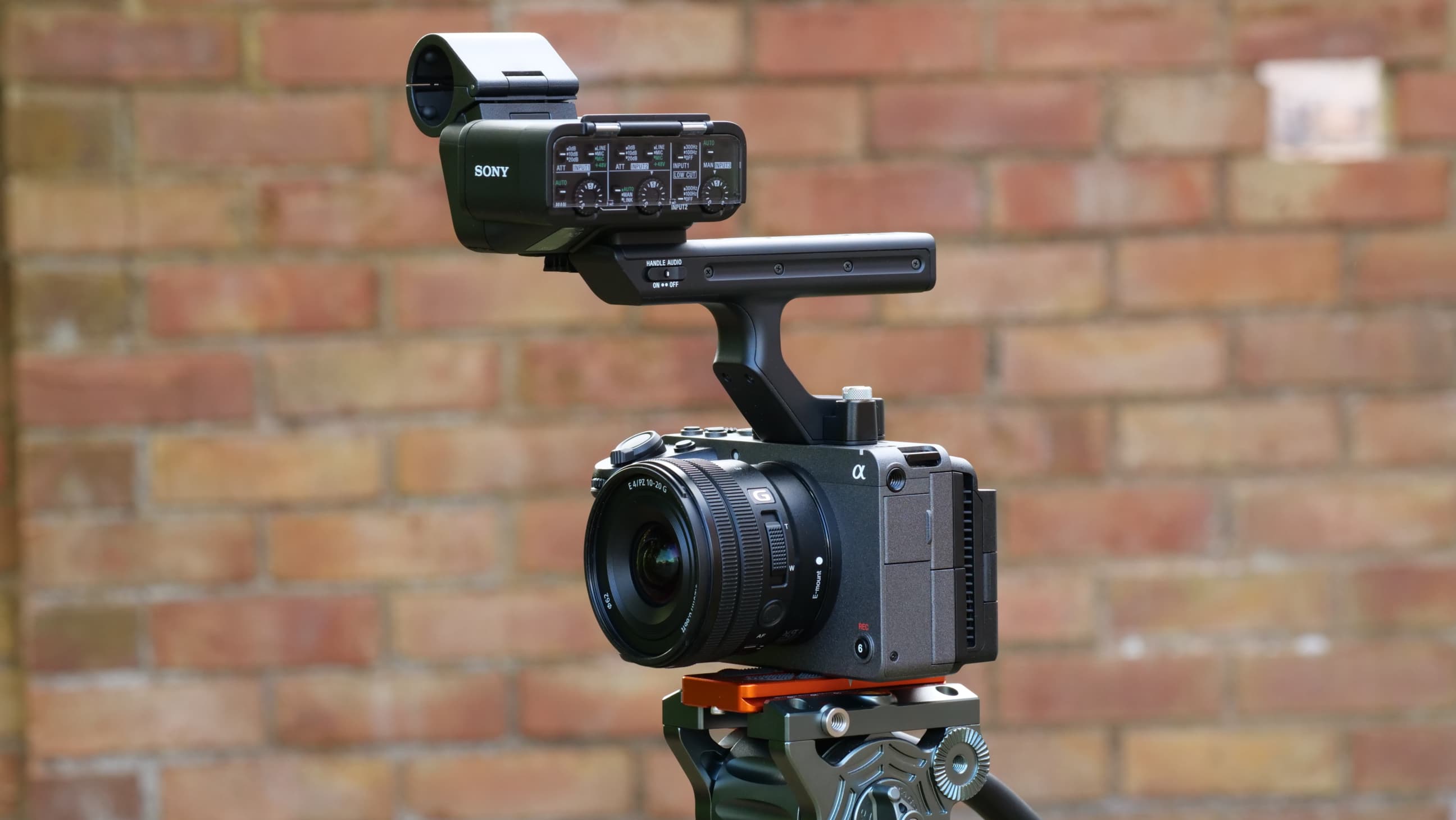
Right now, the Sony FX30 looks like an absolute triumph. Casual vloggers and hybrid stills/video shooters may still prefer a conventional mirrorless camera, but for more ambitious filmmakers who want to extend their post production skills and opportunities into the cinema camera realm, it looks absolutely perfect. Sony has made a full-on cinema camera at regular mirrorless camera prices.
Indeed, the FX30 is so good it leaves you wondering what it means for the full frame and far more expensive FX3, which is the next model up in the range. It has few advantages over the FX30 except its full frame sensor and low light capability, and its 12MP sensor makes it far less attractive for hybrid stills/video work.
Read more:
• Best 4K cameras for video
• Best cinema cameras
• Best cameras for vlogging
• Best Sony cameras

Rod is an independent photography journalist and editor, and a long-standing Digital Camera World contributor, having previously worked as DCW's Group Reviews editor. Before that he has been technique editor on N-Photo, Head of Testing for the photography division and Camera Channel editor on TechRadar, as well as contributing to many other publications. He has been writing about photography technique, photo editing and digital cameras since they first appeared, and before that began his career writing about film photography. He has used and reviewed practically every interchangeable lens camera launched in the past 20 years, from entry-level DSLRs to medium format cameras, together with lenses, tripods, gimbals, light meters, camera bags and more. Rod has his own camera gear blog at fotovolo.com but also writes about photo-editing applications and techniques at lifeafterphotoshop.com

